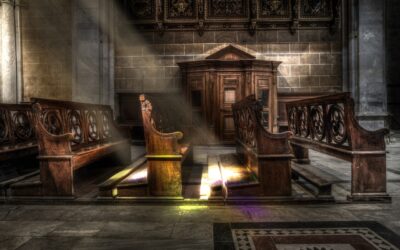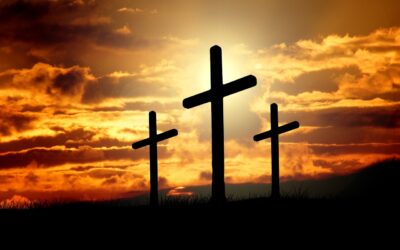Christians in the Holy Land
By Joyce Coronel
The Catholic Sun
For most people in the United States, the Holy Land is a far-off, mystical place — something they might hear about in the news, but only vaguely understand.
It may come as a shock to learn, for example, that Bethlehem, the birthplace of Jesus, is not located in Israel at all — it’s in the West Bank, part of the Palestinian National Authority. And while Bethlehem today boasts
a 91 percent Muslim majority, it’s also home to a large, though quickly diminishing, Palestinian-Christian community.
For the 150,000 Christians who remain in the Holy Land, there are no simple answers. Life is an uneasy existence, lived in the shadow of centuries of religious and political conflict, of bloodshed that defies reason. Christians, caught between the camps of mortal enemies, stand in the eye of the storm.
‘Hemorrhaging Christians’
Israel’s government is concerned about the dwindling number of Christians in the Middle East, according to Israeli Ambassador to the United States Michael Oren, who visited Phoenix last month.
“We are the cradle of faith,” he said during a March 17 press conference in Phoenix, “so faith plays a role in our diplomacy as well.”
When questioned about the future of Christianity in the region, Oren pointed to his work as church advisor for Yitzhak Rabin, the Israeli Prime Minister who was assassinated in 1995.
“I have a very personal attachment to the issue,” he said. “The Middle East is hemorrhaging Christians.”
The Christian population of the region, which has been there for 2,000 years, Oren said, “is dwindling and dwindling fast as a result of violence, intolerance and attacks.”
Pointing to the growing number of attacks on Christians in Iraq, Egypt and Lebanon, he characterized the trend as “an event of historic importance and of immense tragedy.”
“The Christian communities in the Middle East are the natural bridge between a complex and troubled area,” Oren said, “and the United States and the West in general have an interest in protecting these communities.”
As far as Christians in his country, the ambassador drew a sharp distinction between what he termed the “hyper-democracy” of Israel and the rest of the Middle East.
“Israel is the only country in the Middle East which has a growing population [of Christians]. The only one,” Oren said. “The Christian population in Israel is an affluent community…it’s a very successful community and we cherish that community.”
Along the Via Dolorosa inside the Old City
A two-edged sword
Franscican Father Peter Vasko, who’s spent nearly three decades living among Christians in the region and is president of the Franciscan Foundation for the Holy Land, offered a different take.
“I certainly agree with [Ambassador Oren] that [the Israelis] cherish the Christian community, but at the same time, there have been some policies that have affected the Christians in negative ways,” the priest said.
“We have to work together for close negotiations always. We have to have talks with the three groups, Jewish, Muslim, and Christian.”
One of the policies Fr. Vasko questions has to do with the concrete wall Israel built along and within the West Bank. The wall, he said, has created hardships.
Palestinian armed resistance, reignited in 2000 prior to the construction of the barrier, targeted Israel with more than 70 suicide bombings that originated in the West Bank. Nearly 300 Israelis were killed and 1,900 were injured. The wall was seen as a way to prevent terrorist attacks.
The imposing structure stretches more than 200 miles and stands more than 26 feet high. Built according to the 1967 border between Israel and Palestine, Israel effectively absorbed some Palestinian land, fueling further resentment.
“The separation barrier has indeed prevented the number of suicide bombers in Israel,” Fr. Vasko admitted. “It is a positive step in curtailing terrorists from entering Israel and we commend that, but unfortunately, the barrier is like a two-edged sword.”
The wall, Fr. Vasko said, has blocked some 320,000 Palestinians — both Christian and non-militant Muslims — from jobs in principal Israeli cities. The wall spawned vast unemployment in the West Bank.
“A lot of Christians were employed in Jerusalem and Tel Aviv and because of the barrier have lost their jobs,” Fr. Vasko said. “People have no money to pay for school tuition, let alone purchasing food. It has caused a lot of difficulties for them.”
Fr. Mike Straley, pastor of St. Paul Parish in Phoenix and a member of the Equestrian Order of the Knights of the Holy Sepulchre, has seen the wall for himself and shares a similar view.
“I used to do prison work as a chaplain,” Fr. Straley said. “You feel like you are going into an Arizona state prison when you’re going into Bethlehem. It’s walled with razor wire around the edges. It’s very, very difficult.”
Fr. Straley visited Bethlehem University in 2009 and asked one of the students, a Palestinian who lives just outside Bethlehem, how long it takes her to get to school.
“She said it used to take 20 minutes, but now it could take anywhere from an hour to half a day, depending on how much hassle they put her through.”
The wall and the settlements the Israelis have built, Fr. Straley said, are in violation of international law.
Inside the Church of the Holy Sepulcher in Jerusalem
The difficulty for Palestinian Christians is that they are caught in the middle of the ongoing conflict. Israelis see them as Arabs — and therefore trouble — and militant Muslims view them as traitors — pro-Israeli and pro-West. Many, in fact, are not.
‘We are watched’
Isam, a businessman who lives in Phoenix and gave only his first name, was born in Nazareth and grew up as a Christian there, attending and later teaching in Catholic schools.
He emigrated to the United States just prior to the 1967 war, but returns to his homeland every two years. Most of his family still lives there.
The Mossad — the Israeli equivalent of the CIA — is powerful, and he said and he didn’t want to disclose his last name.
“If you say things that go on the record, it could really hurt you or they could use it against you,” Isam said. “They are not going to shoot them or kill them, but they make life miserable anyway by taxes or confiscating property — this is the Israeli way.”
Isam sells the carved, olive-wood statues of Jesus and Mary that Bethlehem is famous for, but said many have left Bethlehem to sell their wares in the United States. The Christian population of the city once stood at 80 percent, but is now down to just nine percent.
“The wall is not necessarily for the Christians, but it doesn’t make it easy for them. Christians are part of the Arab community,” Isam said.
“The only thing different between the Christians and Muslims in the eyes of the Israelis is that the Christians are not going to cause human damage, they’re not going to be suicide bombers,” he said.
“I am a citizen,” Isam said, “but I am watched, and every other Christian, we are watched; they keep an eye on us. We don’t have that total freedom.”
Fr. Straley recalled a statement he heard on his 2009 trek to the Holy Land: “If you want to take our side, we don’t need that.”
He heard it from a Melkite bishop, who addressed the pilgrims, offering the heartfelt plea.
“We don’t need people taking sides,” the bishop said. “We need people working for peace.”
Such a peace has been hard to come by.
“Both Israel and the Palestinians have a natural right to self-determination,” Fr. Vasko said. “Military victories by themselves do not bring about security. Only peace built on justice and human rights brings about security.”





